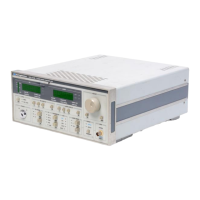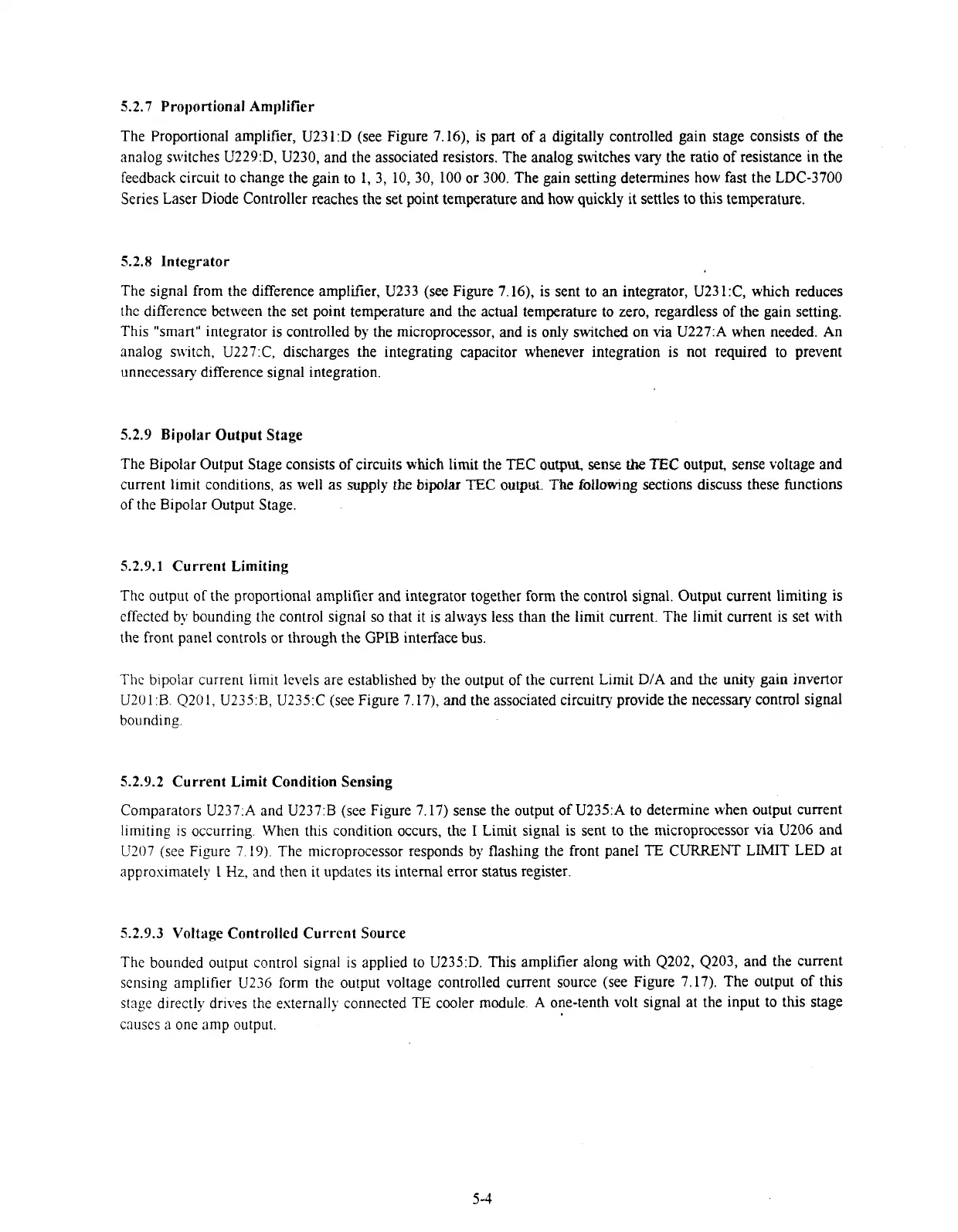5.2.7 Proportional Amplifier
The Proportional amplifier, U231:D (see Figure 7.16), is part of
a
digtally controlled gain stage consists of the
analog switches U229:D, U230, and the associated resistors. The analog switches vary the ratio of resistance in the
feedback circuit to change the gain to 1, 3, 10, 30, 100 or 300. The gain setting determines how fast the LDC-3700
Series Laser Diode Controller reaches the set point temperature and how quickly it settles to this temperature.
5.2.8 Integrator
The signal from the difference amplifier, U233 (see Figure 7.16), is sent to
an
integrator, U23
1:C,
which reduces
the difference between the set point temperature and the actual temperature to zero, regardless of the gain setting.
This "smart" integrator is controlled by the microprocessor, and is only switched on via U227:A when needed. An
analog slvitch, U227:C, discharges the integrating capacitor whenever integration is not required to prevent
unnecessary difference signal integration.
5.2.9 Bipolar Output
Stage
The Bipolar Output Stage consists of circuits which limit the
TEC
output,
sense
the
TEC
output, sense voltage and
current limit conditions, as well as
supply
the
bipolar
TEC
ourput.
The
following
sections discuss these functions
of the Bipolar Output Stage.
5.2.9.1 Current Limiting
The output of the proportional amplifier and integrator together form the control signal. Output current limiting is
effected by bounding the control signal so that it is always less than the limit current. The limit current is set with
the front panel controls or through the GPIB interface bus.
The
bipolar current limit levels are established by the output of the current Limit D/A and the unity gain invertor
U20
1
:B.
Q20
1,
U235:B, U235:C (see Figure 7.17),
and
the associated circuitry provide the necessary control signal
bounding.
5.2.9.2 Current Limit Condition Sensing
Comparators U237:A and U237:B (see Figure 7.17) sense the output of U235:A to determine when output current
limiting is occurring. When this condition occurs, the
I
Limit signal is sent to the microprocessor via U206 and
U207 (see Fipre 7.19). The microprocessor responds by flashing the front panel
TE
CURRENT LIMIT LED at
approxmately
1
Hz,
and then it updates its internal error status register.
5.2.9.3 Voltage Controlled Current Source
The bounded output control slgnal
IS
applied to U235:D. This ampllfier along with 4202, 4203, and the current
senslng ampllfier U236 form the output voltage controlled current source (see Figure 7.17). The output of this
stage
directly
drives the externally connected
TE
cooler module. A one-tenth volt signal at the input to this stage
causes a one amp output
Artisan Technology Group - Quality Instrumentation ... Guaranteed | (888) 88-SOURCE | www.artisantg.com

